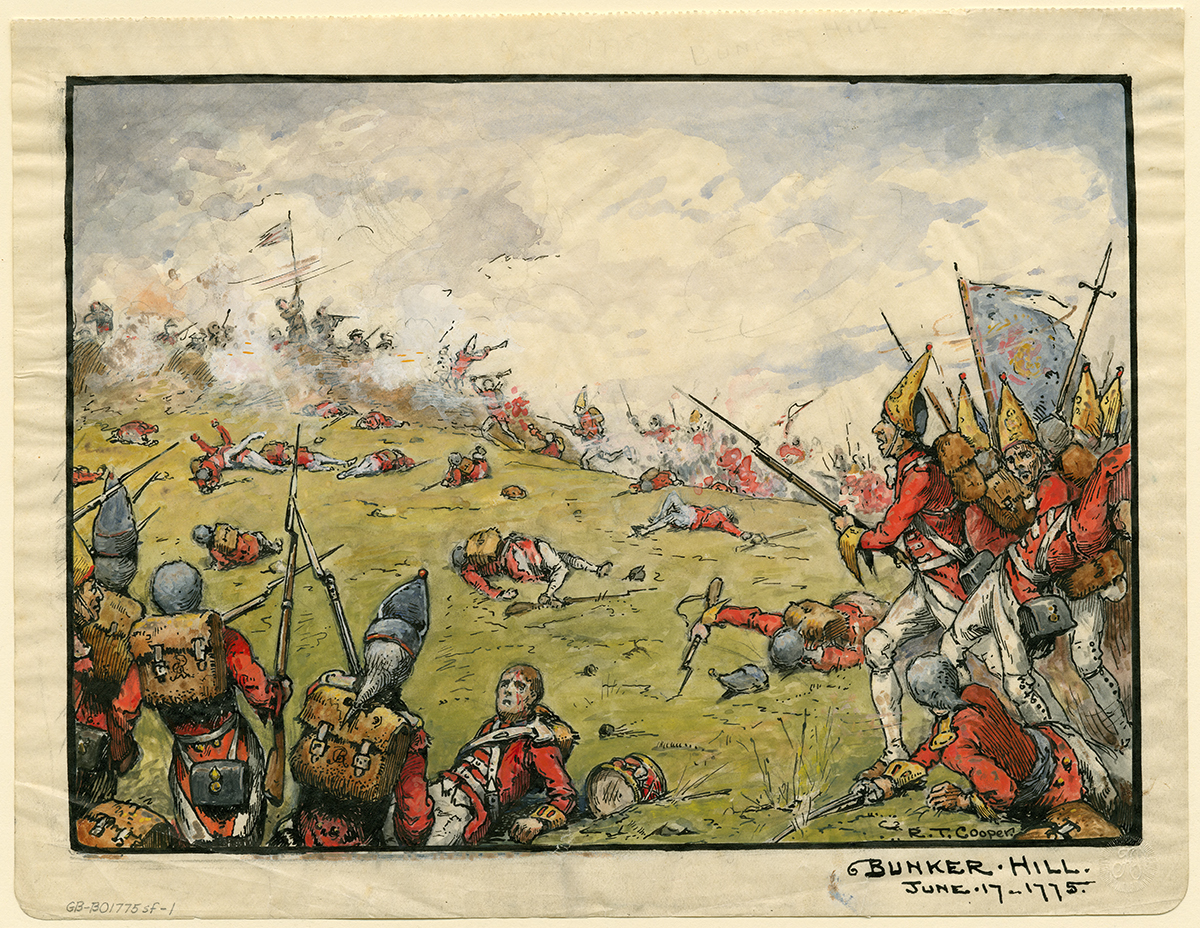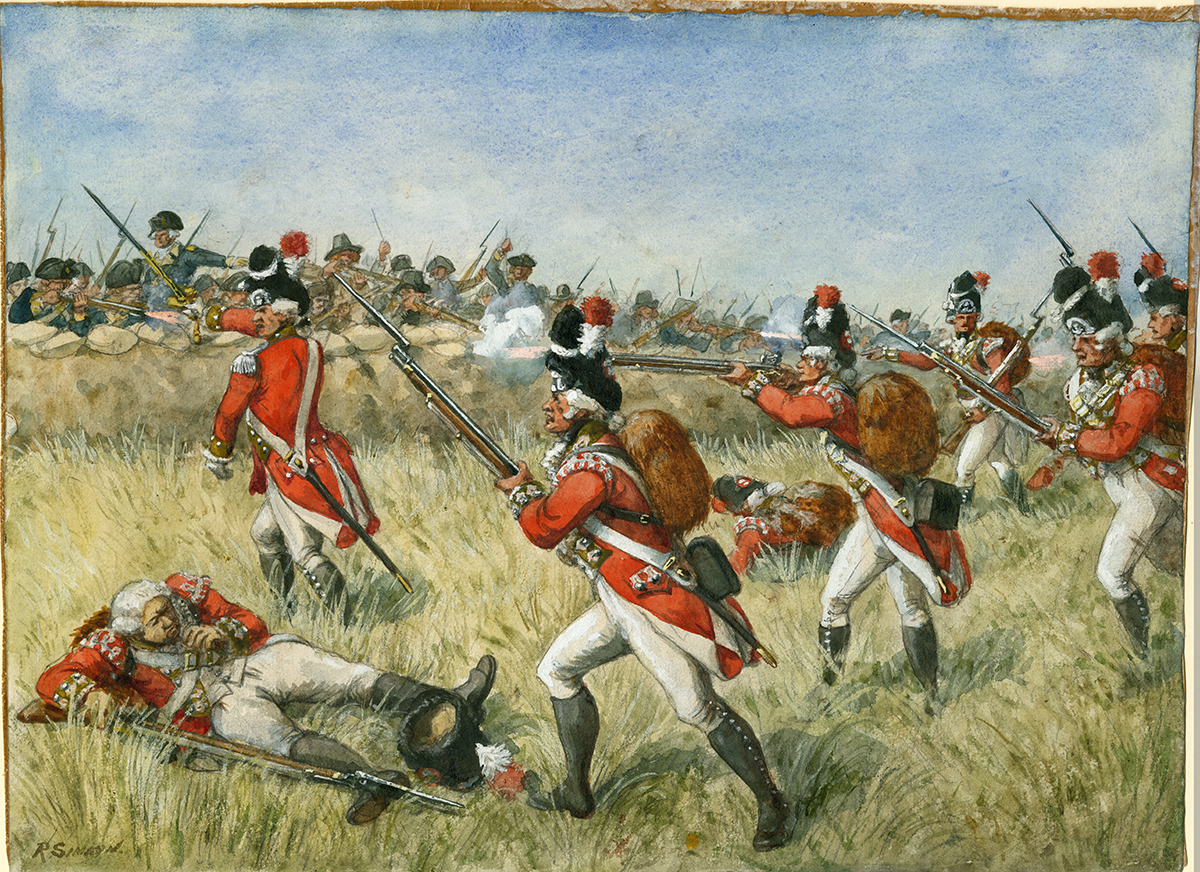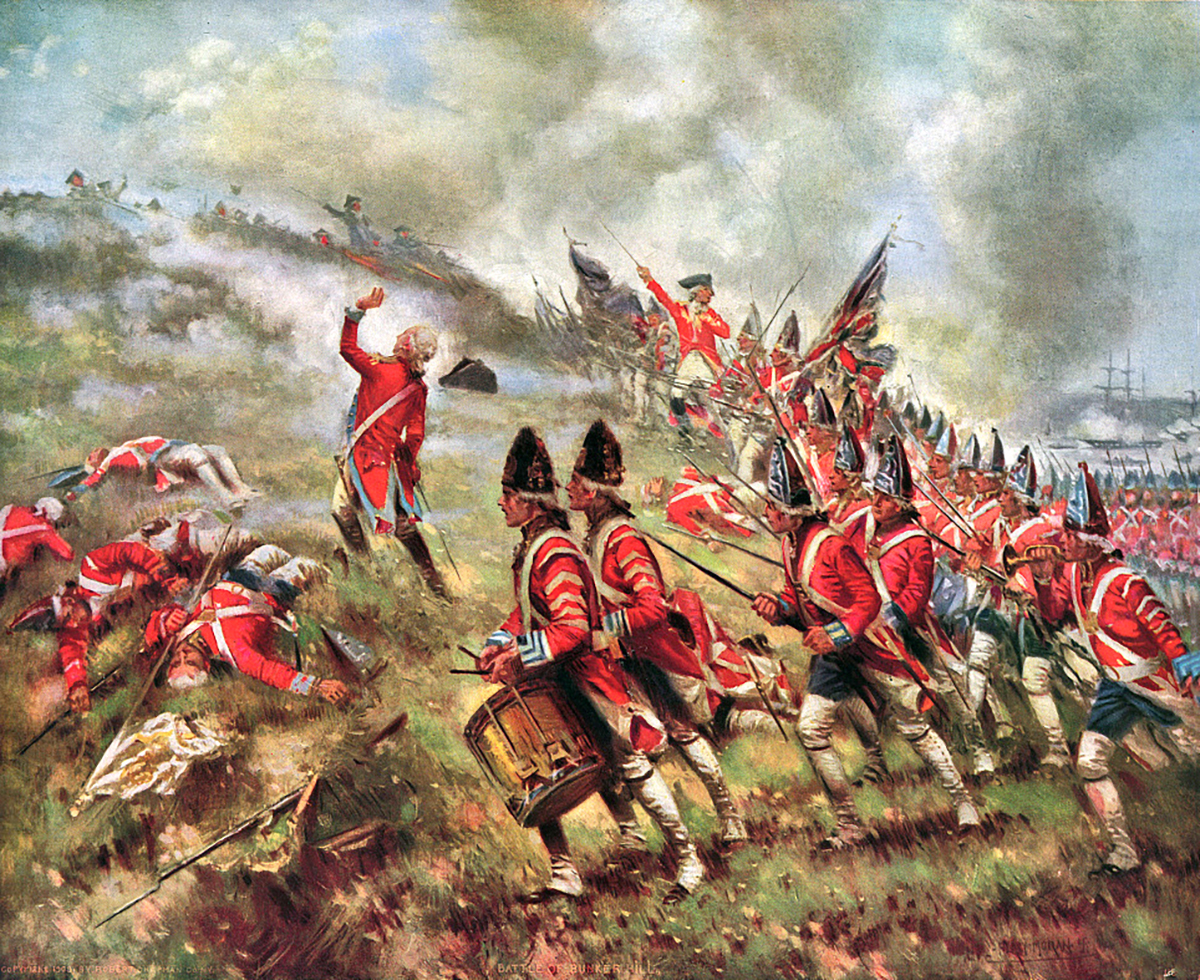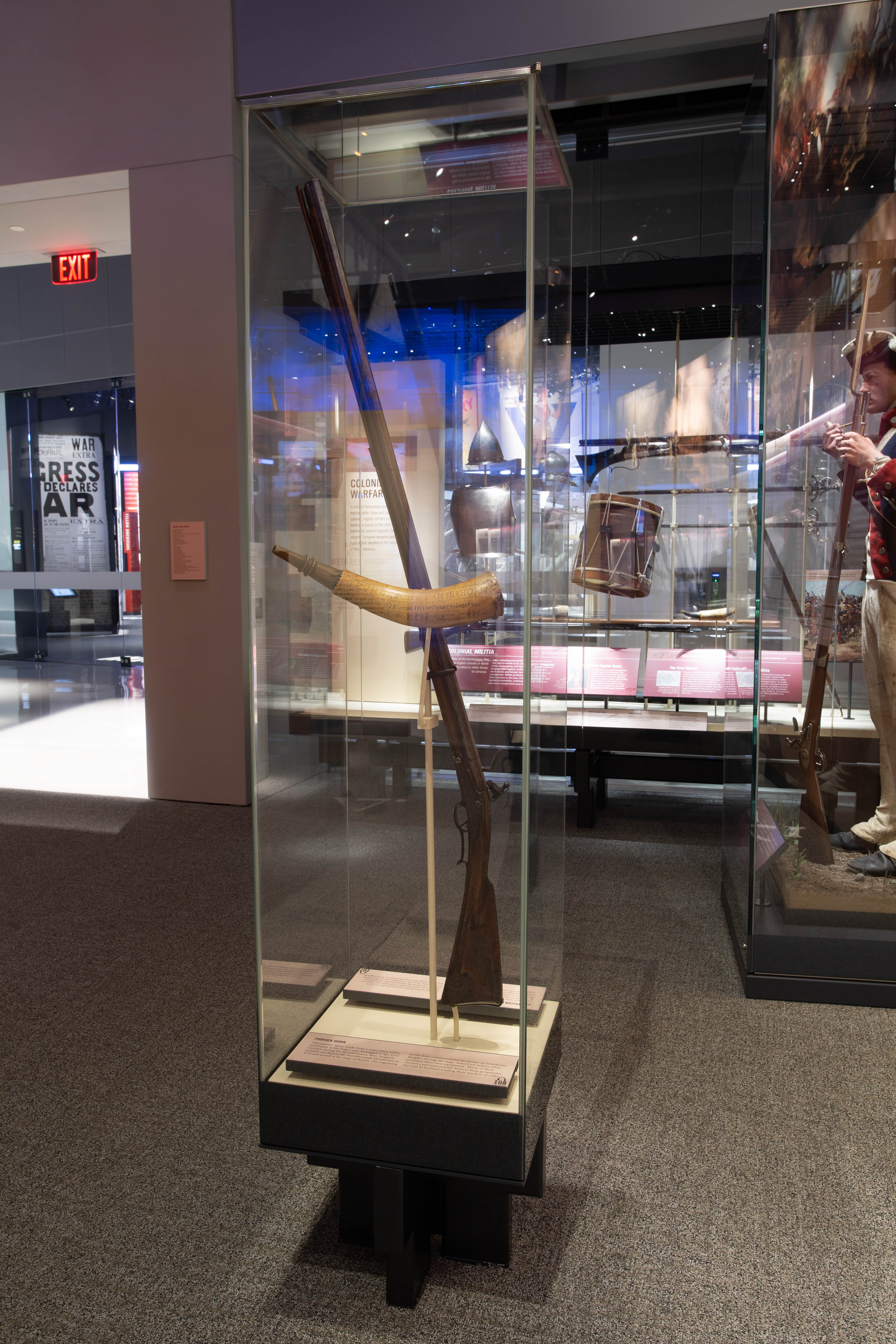After the battle, a corporal in the Massachusetts militia, Amos Farnsworth, recalled the swirling chaos which engulfed his fellow soldiers on Breed’s Hill. Prescott and the survivors fled to Bunker’s Hill, and by late afternoon, General Putnam had withdrawn all of his troops from the Charleston peninsula. The British, badly mangled by the day’s events, chose not to pursue.
"“As the enemy approached, our men was not only exposed to the attack of a very numerous musketry, but to the heavy fire of the battery of Corps-Hill, 4 or 5 men of war, several armed boats or floating batteries in Mistick River, and a number of field pieces. Notwithstanding we within the intrenchment, and at a breast work without, sustained the enemy’s attack with great bravery and resolution, kiled and wounded great numbers, and repulsed them several times; and after bearing, for about 2 hours, as sever and heavy a fire as perhaps ever was known, and many having fired away all their ammunition, and having no reinforcement, althoe thare was a great boddy of men nie by, we ware over-powered by numbers and obliged to leave the intrenchment, retreating about sunset to a small distance over Charlestown Neck.”"
Corporal Amos Farnsworth





